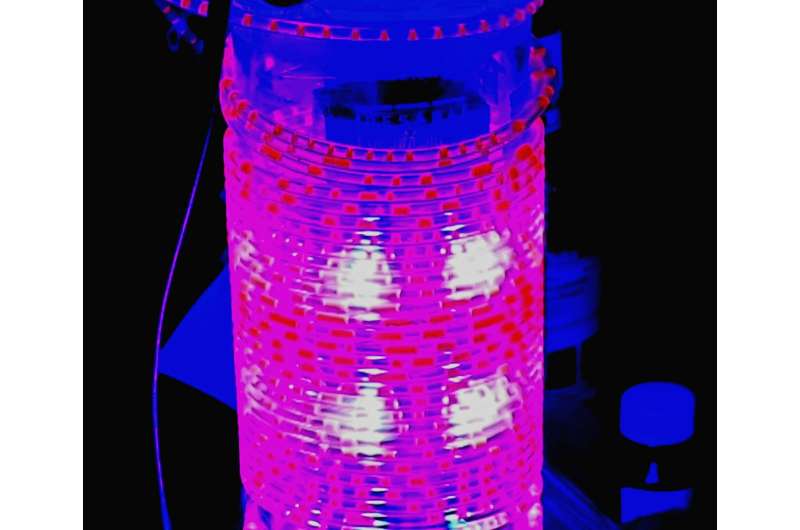This article has been reviewed according to Science X's editorial process and policies. Editors have highlighted the following attributes while ensuring the content's credibility:
fact-checked
proofread
New synthesis method uses light reaction on a water surface

By forming chemical bonds between atoms, complex molecules such as those needed for medicines, crop protection products, or high-performance materials are prepared using synthetic chemistry. Such synthesis reactions typically require organic solvents, metal catalysts, and reagents such as acids or alkalis. Not all auxiliary materials and solvents can always be recycled, which results in waste.
Researchers from the University of Regensburg under the lead of Prof. Dr. Burkhard König, from the Institute of Organic Chemistry, are now presenting a completely different way to synthesize complex molecules: the molecules to be reacted are applied to a water surface, where they form a thin film. Irradiation with violet light triggers a reaction that links both reaction partners.
The new methodology exploits the film formation of water-insoluble organic molecules on the water surface (like an oil film on a puddle) to create ideal conditions for activation by light. The breadth of application of the technology was demonstrated in more than 160 examples, including the synthesis of precursors of drugs.
The light reaction on the water surface now allows chemical synthesis without the use of organic solvents or other reaction additives. This makes the production of chemical products more efficient and environmentally friendly. The results have now been published in Science.
The project has been running for about two years. During this time, numerous experiments were carried out to further develop and confirm the central discovery. Transferring the reaction to a flow reactor was a breakthrough, as the synthesis can be carried out continuously and larger amounts of product are also accessible. Spectroscopic measurements provided insight into the molecular mechanism of the reaction.
In subsequent work, the synthesis technology will now be applied to other reactions to achieve the widest possible range of applications in the production of chemical products.
More information: Ya-Ming Tian et al, Accelerated photochemical reactions at oil-water interface exploiting melting point depression, Science (2024). DOI: 10.1126/science.adl3092
Provided by Universität Regensburg





















